
views
Laminating
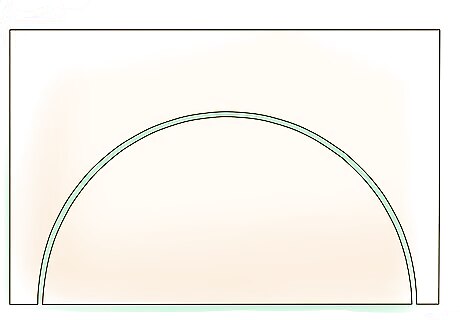
Create a bending form. Set a drawing compass to the thickness of your lumber. Using the compass, trace two lines on a stack of plywood in the shape you'd like to bend your wood. Cut along both lines with a bandsaw. Now you have a gap the perfect size for your lumber, and a two-part plywood form to press the lumber from both sides. Alternatively, just cut one line to create the inner curve, and use clamps to press the lumber against it. There will be a small amount of spring-back after you release the wood with this method. Bend it slightly farther than you want the final shape.
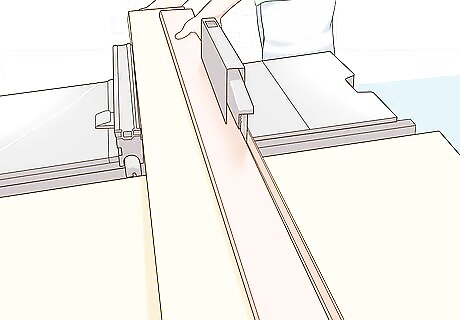
Plane your lumber into thin strips. Once glued back together, these strips will be much more flexible than the original lumber. You can use any type of wood, but cross-grained wood and wood with knots are likely to break. Plane it into strips according to how far you plan to bend it: For a curve with a 2 to 4 inch radius (5–10 cm), plane the wood into 3/32" (2.4 mm) strips. For a curve with a 4 to 8 inch (10–20 cm) radius, plane to 1/8" (3.2 mm). For an 8 to 12 inch (20–30 cm) radius, plane to 3/16" (4.8 mm). For a radius greater than 12 inches (30 cm), plane to 1/4" (6.4 mm). These are guidelines to use as a starting point. The wood species and grain slope affect the result, so you may need to experiment.
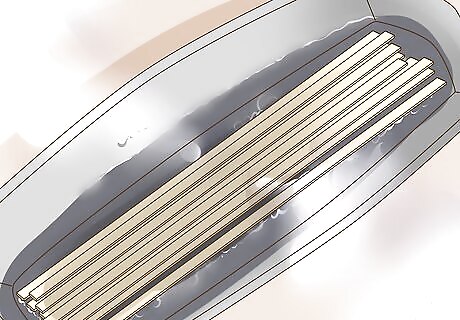
Soak the strips in hot water (optional). This will make the wood more flexible, which may be necessary for tight bends. However, for best results, you will need to keep the wood wet for the first three or four hours after you bend it. Skip this step if you prefer a less time-intensive approach, or if you are only creating slight bends.
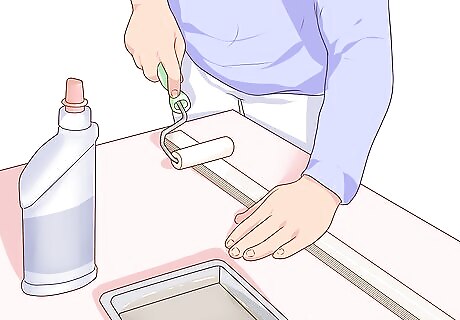
Glue the strips together immediately. Working with freshly planed surfaces will increase the strength of the bond. You can use epoxy, polyurethane, aliphatic resin, or just about any high-strength glue that works on wood and meets the needs of your project. Distribute the glue as evenly as possible. Rolling a 3/8" (9.5 mm) threaded rod over the wood can give better results than brushing on the glue. Flip every other strip end-to-end before gluing. This will prevent the grain slope from lining up, removing lines of weakness.
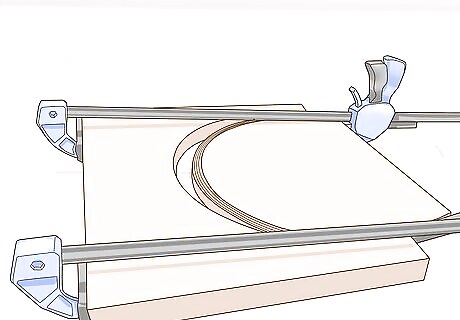
Clamp the wood onto your bending form. Bend the laminated wood along the piece of plywood you prepared. Clamp it tight in several places. The more clamps you use, the less chance there is that gaps will appear between strips, and the closer your wood will get to the desired shape.

Leave the wood until the glue sets. Check your glue label instructions for the curing time. (If it doesn't say, wait 24 hours.) After that, the wood should stay in its new shape. If you soaked the wood, don't forget to keep it wet for the first three or four hours.
Steam Bending

Choose your lumber. Green and air-dried hardwood are both suitable for steaming. The risk of breaking is too high for kiln-dried wood, softwood, and any lumber with less than 10% moisture content (15% for tight bends). Straight-grained lumber with minimal knots is recommended, but you can use cross-grained lumber with a grain slope less than 1:15. Hackberry and oak are among the best hardwoods for this approach; a 1 inch (2.5 cm) thick piece can bend to a curve radius as tight as 2 inches (5 cm). Maple, cherry, and poplar are prone to damage and only accept slight bends.

Build a steam box. Construct a tongue-and-groove box large enough to hold your lumber out of ¾" (19 mm) thick, exterior-grade fir plywood. Fit a hinged door on each end, and seal the joints with silicone and screws. Insert brass rods or wooden dowels through the sides for the lumber to rest on, so steam can circulate around it. Leave the box unpainted and unsealed so it can dry out between uses. If you are only steaming parts the size of walking sticks or smaller, you can use a length of ABS pipe with a 2 to 4 inch (5–10 cm) diameter instead. Another alternative is to melt 6 mil polyethylene into a plastic bag around your lumber. You can then bend the lumber while it is still in the steam bag for maximum flexibility.
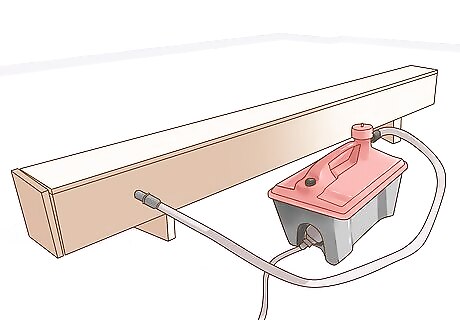
Set up steam collection and drainage. You can use an electric tea kettle as a steam source for steaming pieces 1" x 2" (19 x 38 mm) or smaller. For larger pieces, use a clean pressure cooker, metal gas can, or other large container over an electric hot plate; or rent a wallpaper steamer. Connect the steam source to your box as follows: Connect a 1½" (3.8 cm) diameter hose to the steam source with tightly fitted nuts. Cut a hole in the steam source if necessary to accommodate this. Cut a hole in the base of the box and attach the other end of the hose. Drill a few small drainage holes into the base of the box, especially toward one end. Set up the box so it slopes toward this end. Optionally, drill a hole in the top of the box and plug it with a stopper. This allows you to insert a thermometer.
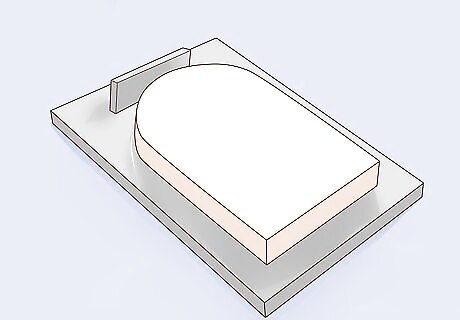
Build a bending form. Use a bandsaw to cut a stack of plywood into the shape of the inner curve. Screw the plywood onto a table to create a form to bend your wood around once steamed. To prevent the outer curve from splintering, you can either form a similar plywood back (just cut out the thickness of your lumber from the remaining plywood), or secure a metal bending strap to your table. Unless you are only bending a slight curve, you will also need to place clamps against the ends of the lumber. Metal straps may discolor your wood. If this is an issue, use an oversize piece of lumber and remove the affected area. If you will bend the wood to a curve radius less than 4" (10 cm), you will need a stronger material to bend it around. Cut off the tip of the plywood corner and replace it with a piece of hardwood.
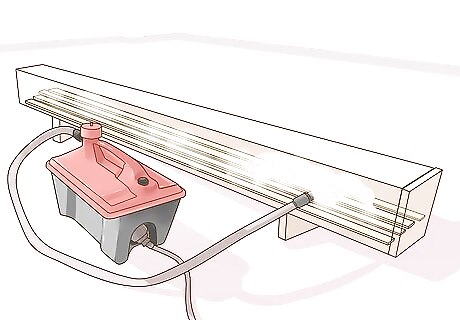
Steam the wood. Put the wood into the box, seal it, and heat plenty of water to create steam. As a general rule, wood needs steaming for one hour per inch (2.5 cm) of thickness at 212ºF (100ºC). Put in a few pieces of test lumber as well so you can experiment, since moisture content, wood species, and other factors all affect the wood's behavior. (For example, if your wood has a moisture content above 20%, you may only need to steam for half an hour per inch.) If you have a thermometer, use a small hole at the top of the box to check the temperature. If it's too cool, wrap the box in an insulating material. To avoid steam burns, wear work gloves and keep your face back when opening the steam box.
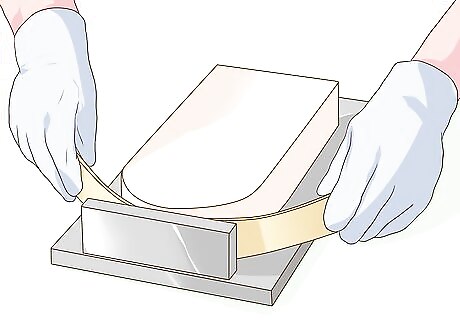
Bend the wood onto the form. The heat and moisture from the steam will soften the lignin, a substance responsible for wood's rigid shape. Immediately after steaming, place the wood against one end piece on your bending form. Starting at that end, bend the wood around your form at a moderate, steady pace. Compress the wood securely between the two pieces of plywood (or the plywood and backing strap). If the wood is not secure, the outer edge may stretch and weaken. If the wood cracks, it needs more steaming. If the wood wrinkles along the inner edge, it may have steamed too long, or there may be too much compression.
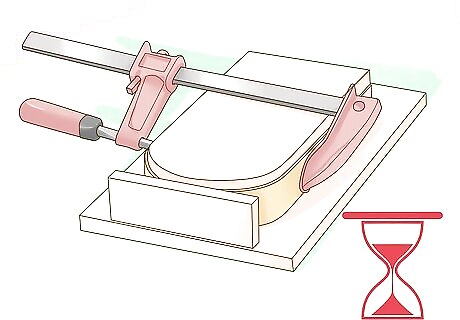
Leave the wood to cool and dry. The length of time varies depending on the type of wood, thickness, and intended purpose. As a starting point, keep the wood in a well-ventilated location for 24 hours before removing it from the bending form. If it cooled sufficiently, the lumber should hold its new shape indefinitely.
Kerfing
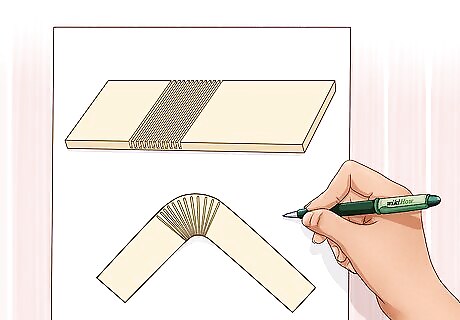
Plan your project. A kerf is just a saw cut, and kerfing means cutting a series of these slits so your wood can bend. The result is much weaker than other methods of bending wood, but it keeps the wood permanently flexible along that curve. It is also the fastest approach, and does not require special equipment.
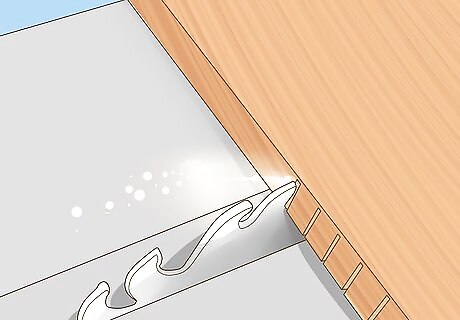
Cut a series of grooves against the grain. The cuts must be against the grain to reduce the chance of splitting the wood. Use a table saw to make these cuts along the part of the wood you'd like to bend. Space your cuts evenly (and close together) with a jig, or use a visual indicator on your table to get a consistent distance between cuts.
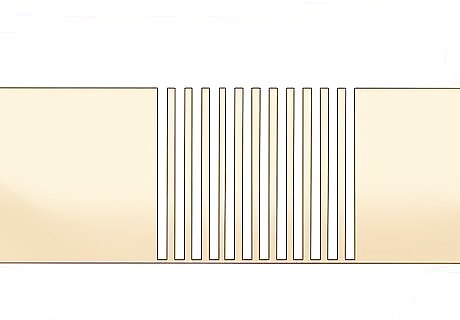
Cut almost to the edge of the wood. In order to bend your wood more than a slight curve, you'll need to cut almost entirely through the wood. Leave only a thin edge to hold the wood together.
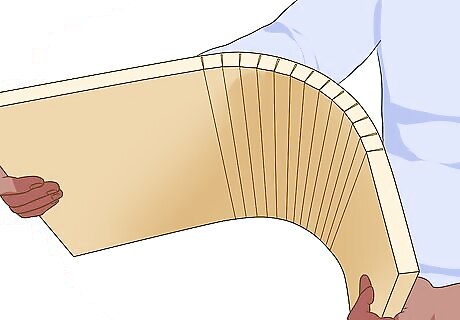
Bend the wood inward. Bend the wood so the "spines" left by your cut touch, forming a single stress-bearing edge. You can now keep the bend in place by fastening the two ends of the lumber to a stable object. Remember that this is a weak bend, and do not rely on it to support much weight or stress.
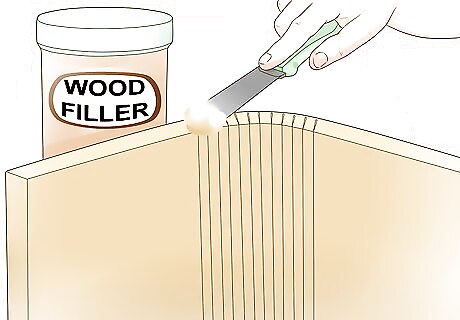
Fill the kerfs if desired. If you want to hide the gaps left by the saw, plug them with wood filler that matches your lumber. Alternatively, leave the wood as-is if you prefer the aesthetic, or if you would like to bend it to different angles.

















Comments
0 comment